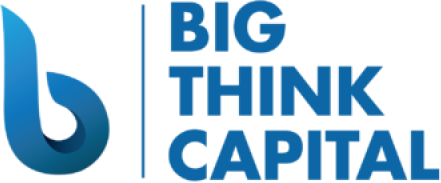How Rising Fed Interest Rates Impact Small Business Funding
Estimated Reading Time: 5 minutes
- Monitor your cash flow vigilantly, as higher rates can strain operations.
- Strengthen your business credit score to improve your chances of securing favorable funding options, such as SBA loans and MCAs.
- Utilize technology to streamline financial management and maintain open lines of communication with lenders.
Table of Contents
- Understanding the Rise in Fed Interest Rates
- How Higher Interest Rates Affect Working Capital Needs
- Maximizing Your Chances for SBA Loans or MCAs
- Best Strategies for Managing Fluctuating Capital Needs
- Effective Credit Score Management Tips
- Practical Takeaways
- Final Thoughts
Understanding the Rise in Fed Interest Rates
The Federal Reserve adjusts interest rates to regulate the economy, aiming to control inflation and manage economic growth. As of early 2025, the Fed has raised rates to combat persistent inflation that has affected various sectors. Higher interest rates typically result in increased borrowing costs, which can be particularly daunting for small businesses that rely heavily on external funding sources. Here are some key points to keep in mind:
- Increased Borrowing Costs: With higher interest rates, the cost of loans rises, making it more expensive for businesses to access the capital they need for growth and daily operations. This can lead to reduced borrowing and investment among small businesses.
- Impacts on Cash Flow: Higher interest payments can strain cash flow, leaving less available capital for operational expenses, staff salaries, or new projects. Ensuring a healthy cash flow becomes more critical in a higher interest environment.
- Consumer Behavior Shifts: Rising rates can also affect consumer spending, impacting revenue for businesses that sell products or services. If potential customers feel the pinch from increased borrowing costs, they may cut back on discretionary spending.
How Higher Interest Rates Affect Working Capital Needs
Working capital is the lifeblood of any small business, financing daily operations, covering overheads, and allowing for growth opportunities. When rates rise, managing working capital needs becomes all the more essential. Here are some considerations:
Tightening Cash Flow
Small businesses may struggle to maintain adequate cash flow as costs increase. This often necessitates exploring alternative funding options that provide quicker access to capital without the extended time frames of traditional bank loans. Working capital advances, for instance, can help bridge short-term funding gaps.
Rethinking Short-Term Strategies
Businesses should reassess their short-term financing strategies under higher interest rates. Consider these approaches:
- Implement Cost Control Measures: Reducing unnecessary expenses can create a buffer to manage cash flow more effectively during periods of tight budgets.
- Utilize Line of Credit Wisely: Access to a revolving line of credit allows for flexible cash management without incurring more interest than necessary. Properly leveraging it can be invaluable when cash flow becomes tighter.
Maximizing Your Chances for SBA Loans or MCAs
SBA loans and Merchant Cash Advances (MCA) remain viable funding options even when interest rates rise. However, there are strategies to enhance your chances of qualifying for these products.
Strengthening Your Application
- Enhance Your Credit Profile: A solid business credit score can significantly improve your chances of securing funding. Focus on:
- Paying bills on time.
- Reducing outstanding debts.
- Keeping credit utilization low.
- Provide Solid Documentation: Ensure that your loan application is thorough and includes:
- Accurate financial statements.
- Comprehensive business plans that outline cash flow projections and growth strategies.
- Tax returns and other relevant documents that demonstrate financial health.
Understanding MCA Nuances
MCAs can be attractive despite higher interest rates due to their quick access to cash. However, they come with unique considerations:
- Repayment Structure: MCAs are paid back through a percentage of daily credit card sales. This means cash flow fluctuations will directly impact your repayment amounts.
- Evaluate Terms Carefully: Understand the effective interest rate and total cost of the MCA to ensure it aligns with your financial capabilities.
Best Strategies for Managing Fluctuating Capital Needs
Today’s economic landscape requires proactive cash management, especially amidst rising interest rates. Here are practical strategies to manage capital needs effectively:
Regular Financial Health Checks
Conduct consistent evaluations of your financial health. Monitor:
- Revenue Trends: Identify fluctuations in income and adjust your budgeting accordingly.
- Expense Patterns: Examine your regular expenditures to find areas where costs can be reduced or managed more efficiently.
Leverage Technology for Financial Monitoring
Utilize accounting software tools that provide real-time insights into your financial performance. These platforms can help track cash flow, manage payments, and analyze trends, aiding informed decision-making.
Build a Healthy Relationship with Lenders
Maintain open communication with financial institutions. Developing trust and rapport can lead to better terms and conditions when seeking funding, even during periods of high interest.
Effective Credit Score Management Tips
Your business credit score can significantly influence your financing options. During times of rising interest rates, managing this score effectively is paramount.
Key Practices for Improving and Maintaining Your Score
- Review Your Credit Reports: Regularly check your credit reports for errors that could negatively impact your score. Dispute inaccuracies promptly.
- Minimize New Credit Applications: Each application can temporarily decrease your score. Apply only when necessary to avoid multiple hits.
- Establish a Diverse Credit Portfolio: A diverse credit mix can positively impact your score. Balance between revolving credit (like credit cards) and installment loans (like vehicle financing) for optimal results.
Practical Takeaways
Understanding how rising Fed interest rates impact small business funding is crucial for effective financial planning. Consider these key takeaways:
Final Thoughts
In an era of rising interest rates, small business owners face unique challenges, but they also have opportunities to adapt and thrive. By understanding the effects of these economic shifts and leveraging strategies that enhance financial stability, your business can continue to secure essential funding and achieve growth.
At Big Think Capital, we are committed to supporting small businesses through these testing times. For personalized guidance on securing the right funding options for your unique business needs, visit bigthinkcapital.com or speak with one of our funding experts today. Let’s navigate the funding landscape together.






